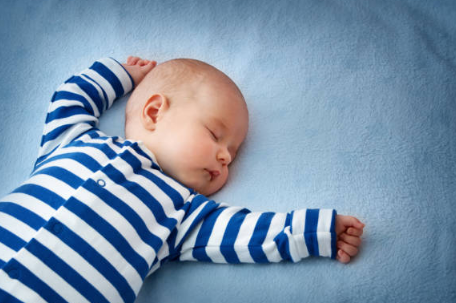As a new parent, you may be concerned about all aspects of your baby’s sleep, including what they wear to bed. It’s not as simple as grabbing the cutest set of pantyhose in the closet. Your child’s clothes must help them maintain the proper temperature throughout the night. Also, choosing an unsafe option may increase the risk of suffocation or strangulation.
Want to know what your baby should wear to bed, whether it’s summer, winter or sometime in between, we’ve gathered expert tips you need to know. (Now if only you could get them to sleep all night!)

Choose Bedtime Clothes for Your Baby
When your baby is sleeping, you should make sure that their body is at an ideal temperature. An environment that is too hot can lead to overheating, which is especially dangerous for babies because it is associated with sudden infant death syndrome (SIDS). On the other hand, temperatures that are too cold can also be dangerous and uncomfortable.
Simply judging how you’re feeling in the nursery or bedroom isn’t necessarily the best indicator. A good rule of thumb is that babies should wear an extra layer of clothing instead of clothes that are comfortable in the same environment.
One or two layers of well-fitting clothing work well in most cases. Babies usually sleep in well-fitting onesies and pajamas. If your home is cold, add an extra layer. This extra layer can be a receiving blanket if swaddling, and a wearable sleeping bag if the room is particularly cold.
Dress Your Baby to Bed on Warm Nights
On warmer nights, choose lightweight, breathable pajamas for your baby. An acceptable option is a cotton onesie. You can also choose cotton or cotton swaddling clothes for your newborn.
When it’s warm outside, I usually wear long cotton pajamas and a 1.0 TOG sleeping bag, and if it’s really warm, I’ll wear a 0.5 TOG sleeping bag. TOG refers to the “overall grade of warmth” of clothing or fabric; The higher the TOG, the warmer the fabric is.
Also, despite the warm temperatures, you should avoid wearing super loose clothing. This increases the risk of SIDS because loose-fitting clothing can cover your baby’s nose and mouth, affecting their ability to breathe.
Dress Your Baby for a Cold Night’s Sleep
When it’s cold, a sleeping bag or wearable blanket can keep your baby warm. The American Academy of Pediatrics (AAP) says that you should never leave a loose blanket in your crib as it can increase the risk of sudden infant death syndrome (SIDS). Also avoid other loose, soft items such as quilts, mattress toppers, pillows, ill-fitting sheets, and stuffed animals.
I recommend wearing long pajamas and possibly a one-piece underneath. Depending on the temperature of the room, you can use a heavier sleeping bag. If it’s cold, I’ll increase the weight of my sleeping bag to 2.5 TOG.
In extremely cold weather, you may consider adding wool pyjamas, as long as your baby isn’t too hot – albeit with a heavier sleeping bag. It’s healthier for kids not to overheat, so I choose to wear a warmer sleeping bag instead of many layers so that the pajamas still have some breathability.
Parents should also avoid wearing clothing with hats or bandanas for safety reasons. No clothing should cover the baby’s face as this may cause suffocation.

Should I swaddled my baby?
According to the American Academy of Pediatrics (AAP), swaddling clothes can help soothe newborns because it replicates the uterine environment. If you decide to swadd, choose a thin blanket and follow the AAP’s following these safety tips:
- Put your baby to sleep on his or her back
- Stop swaddling when your baby shows signs of trying to roll over
- Do not wrap your hips too tightly, as this can lead to hip dislocation or hip dysplasia
- Make sure the swaddling cloth doesn’t come loose
How to Know if Your Baby Is Comfortable
It is important not to overheat or cold the baby. She recommends checking their faces for redness and feeling their temperature. If they feel too cold, add an extra one. If they feel too hot, take one off. If your baby feels comfortable, it’s okay to sleep in a one-piece only.
You should not measure the temperature readings on their hands and feet. It is normal for babies to have cold hands and feet. Instead, check your child’s torso or the back of the neck. If the baby’s chest or neck is slightly cooler, it indicates a good temperature. It should never be too hot or sweaty.

